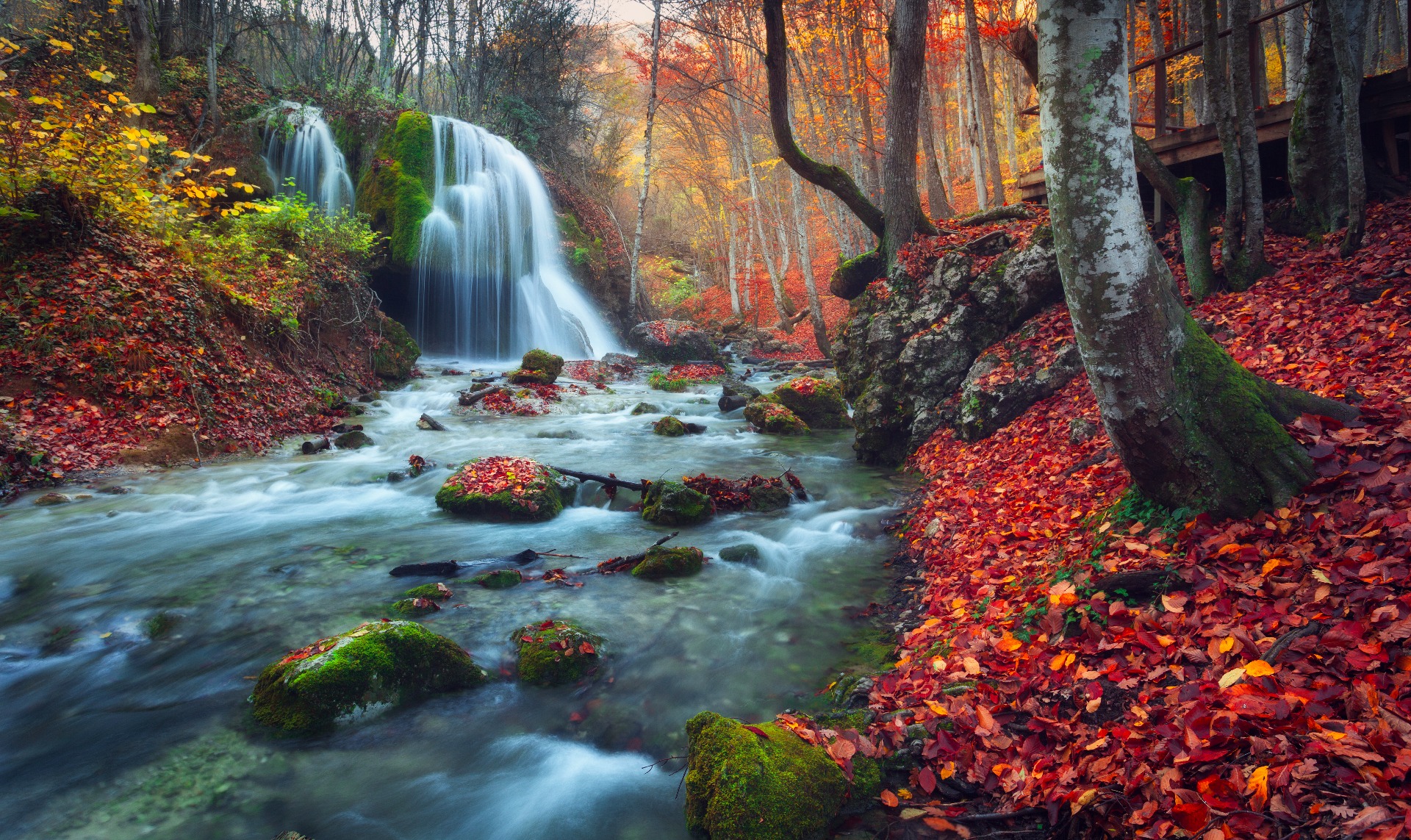
Naimittika-Holi-Guṭīkā-Mātaṅgī
Ṭīkā: Śrīla Kavīrāja Goswāmī concludes his Holi-narration with a metaphorical passage. The cloud is nava-jaladhārā Kṛṣṇa, the lightnings are the nava saudāminī Vrāja Sundarīs, and the Cāṭaka birds are Vṛnda, Dhaniṣṭhā, Nāndīmukhī, Kuṇḍalatā and all the Sakhīs that are watching the fun.This pastime is also occasionally celebrated as the Vasanta-utsava, or the Spring festival. The following is a synopsis of Siddha Kṛṣṇa Dāsa Bābā's naimittika Holi narration which appears in the Guṭīkā:On the third day of the waxing moon in the month of Māgha (January-February), Śrīmati Rādhāranī leaves Javāt with Anaṅga Mañjarī and her Sakhīs to enjoy the Vasanta festival at her parent's house in Varṣāna. Holi begins two days later on Vasanta Pañncamī and lasts 40 days up to Phālgunī Pūrṇimā, i.e., the full moon of Phālgunī (February-March).
During this time, Nanda Mahārāja relieves Kṛṣṇa and Balaram of their cowherding duties so that they can enjoy the Holi festval. The day before Holi begins, Bhagavatī Paurṇamāsī Devī announces the elderly Gopī community: "Starting from tomorrow, the gopa Kiśorīs who perform the Vasanta (spring) Madana Pūjā at the base of Vṛndāvan's Āśoka trees will receive a great boon: their husbands' life duration, riches, prosperity, and cows will all increase."
Hearing the benediction, the elderly cowherd women all order their daughters-in-law to go. Thus Rādhā, Candrāvalī and all the other Yūtheśwarīs along with their Sakhīs prepare for the Pūjā. The first outbreak of Holi begins in the early morning on Vasanta Pañncamī, when Rādhā and her Sakhīs walk from Varṣāna to Nandagram to perform their cooking duties.
Kṛṣṇa suddenly appears with a band of Sakhās to throw colored powders over them. And as the sky becomes covered by a red cloud, Kṛṣṇa quickly slips beside Rādhā to embrace and kiss her. But before the Sakhās can notice his mischief, he returns into their midst.
Later on, after Kṛṣṇa's morning meal, a brief rest, and Yogapith Milan with Rādhā and her Sakhīs at Gupta Kuṇḍa, Kṛṣṇa returns to the house. There he is dressed for the Vasanta festival along with the Sakhās. Then everyone leaves for Vṛndāvan to begins the festive play.
Meanwhile, Rādhā returns to Varṣāna to prepare for Vasanta Madana Pūjā. And shortly after, she and the Sakhīs enter the forest, carrying their Pūjā paraphernalia. As spring's opulences awaken, Vṛnda and her vana Devīs busily decorate the forest for the occasion. But when Rādhā comes to sit upon a Mādhavī mandapa, she looks like the spring goddess, Vasanta Lakṣmī, herself.
Then Vṛnda and her Vana Devīs apporach Rādhā and the other Gopīs to expertly
dress them in forest attire suitable for Vasanta's festival. Vṛnda directs her
attention to Rādhā, while her assistants eagerly dress Śyāmālā, Candrāvalī and
the other Yūtheśwarīs. Rādhā is outfitted in red, with ṣoḍaśa ākalpa (her renowned
sixteen items of dress) and dvādaśa ābharana (twelve types of ornaments).
The kalpa
vṛkṣas offer divine ornaments and śṛṅgāra paraphernalia; they also supply the
ingredients for Holi: the powder-bombs, many divine liquid substances, kasturī
powder, different types of flowers-and bows, and numerous types of jeweled pichkārīs.
After dressing Vriṣabhānu-nandinī sits upon a Mādhavī vedī. But then the music-Ācārya,
the Kinnārī named Mātaṅgī, arrives from kinnara-loka with her special band of
celestial singers.
As she respectfully
approaches Rādhā and the other Yūtheśwarīs, Vṛnda introduces her: "Oh Guṇamayi
(gifted with many qualities) Rādhe! Just try and believe me, this is Mātaṅgī,
she is the greatest Ācārya of the Sangīta-Śastra. She is coming for your Vasanta
festival!"
Rādhā affectionately motions to have Mātaṅgī and her associates comfortably
seated. Then she inquires: "Oh Vrinde! Who are the lady friends accompānying Mātaṅgī?"
Vṛnda replies, "Mātaṅgī's Sakhīs are expert Vīṇā players. But look! That effulgent dark-complexioned girl with peacock feathers in her hair, who holds mango buds of enticing the Kokilas, and who is maudlin by nature- she's the Vasanta-Rāga herself, assuming this Devī-form just to see you!"
Hearing that the Vasanta Rāga somewhat resembles Kṛṣṇa, Rādhā briefly gazes
upon her with a curious, loving glance. Hence, the Vasanta Rāga deems her life
successful!
Mātaṅgī address Rādhā: "Oh Kanta (beloved) of Kāliya Damāna (Subduer of Kāliya)!
For your pleasure the seven Svaras (the musical notes - sā re gā mā pā dhā ni)
and the twenty-two Śrutis (the sounds between two musical notes) have directly
appeared.
Rādhā says, "Oh respected Mātaṅgī! Surely you can enchant Vṛnda and the forest
residents with your singing; can we hear a sample?"
But Vṛnda requests Mātaṅgī: "Kṛṣṇa is coming, and he is singing in the Vasanta Rāga,
so please sing some other Rāga."
As Mātaṅgī takes up the order, a deep mood awakens within her heart, and her voice enters a Rāsa sagara as she opens with the Belavali Rāga. Mātaṅgī's associates accompāny her singing with five types of Vīṇās (the Vipañchi, Mahatī, Kavilāsikā, Kacchapī, and Svara-Maṇḍala). As the Sangīta enters a celestial quintessence-the five Vīṇās harmonise with Mātaṅgī's voice to produce one resonance. Aha! Everyone is wonderstruck by Mātaṅgī's talent!
But meanwhile, another amazing sound is heard. Mixing with flutes, mridaṅgas, ringing bells and other instruments it produces an indescribable delight-as though all the senses were suddenly bombarded by yakṣa-kardama (a balm prepared from kuṅkuma, aguru, kasturī, camphor and candan). Thus Rādhā, Candrāvalī, Śyāmālā and all the other Gopīs divert their attention from Mātaṅgī's sangīta. Instead, helā overtakes them as their ears perk and their restless eyes scan the path like excited deer! And the Vasanta Rāga suddenly resounds with deep anurāga! Thus everyone understands, "Oho! The Ānanda SvaRūpa-Śrī Nanda Kiśora, is approaching with his Sakhā battalion!
